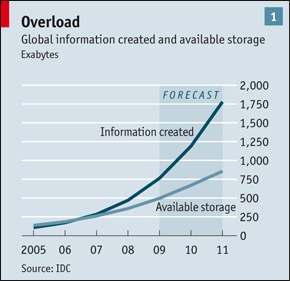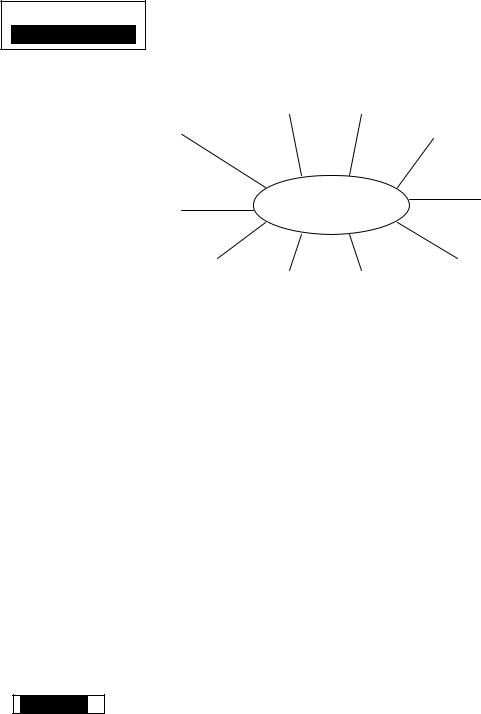
8633
.pdf
30
c.Complete the questions below with make or do in the correct form:
1.Are you generally good or bad at _______ decisions? Does it depend on the kind of decision?
2.In which areas do you think you are ________ most progress in your studies?
3.When was the last time you _________ someone a favour? What was it?
4.How do you feel when you find out you ________ mistakes in your last test?
5.Have you ever _______ research? In what subject?
6.When you have holidays do you enjoy _______ nothing or do you like to be active?
7.How do you feel when your neighbours _______ noise? What do you usually do?
d.Ask and answer the questions.
Activity 4.3
Pronunciation
Put the words from the boxes in the correct columns according to the pronunciation of the letters in bold:
Technology, personal, electric, clearly, completely, rely, widespread, terribly, technician, even, modest, microprocessor, key, cheaper, increasing, need, version, success, evolve, learn, employ, leading, economy, leap, decade, fundamental, beyond, merely, essential, discrete, ahead, entertain, expect, era, early, dream, recognize, speech, realistic, enable, people, incredibly, excited, period, research, service, exploit.
[e] |
[i:] |
[ i ] |
[ ] |
[ ] |
|
|
|
|
|
|
|
|
|
|
Extension |
Discuss the following questions: |
|
1.What was your first computer like? What tasks did you use it for?
2.What role do computers play in your life now?
3.How will computers change in the future? What functions will
they perform?

31
Activity 4.4
Grammar review
Present Perfect
We use the present perfect to:
•talk about actions that continue from the past to the present.
He has worked as an engineer for more than 20 years.
(= He is still an engineer.)
•talk about past events that have a result in the present.
The role of women has changed over the past 100 years.
• talk about life experiences.
He has been to many countries on business.
The following time expressions are used with the present perfect: since, ever, never, yet, just, already, for, so far, recently.
Present Perfect and Past Simple
1. We use the past simple for completed actions that happen in the past. Because the time reference is past, we use time expressions that refer to finished past time.
John passed his driving test last week.
Fifty years ago people didn’t have personal computers. Bill Gates and Paul Allen founded Microsoft in 1975.
2. The decision to use the past simple or present perfect depends on how we see the event. If we see it as related to the present, we use the present perfect. If we see it as completed in the past, we use the past simple.
I’ve known Mary for many years.
(= We are still in touch.)
I knew Mary when I was at college.
(= We don’t keep in touch.)
(See page 48)
1.Find examples of the past simple and present perfect in the text above.
2.Choose the right answer.
1.When ________________ the company?
a)have you joined
b)did you joined
c)did you join
d)have you ever joined
2.___________________ in Germany?
a)Did you ever worked
b)Have you ever worked
c)Worked you
d)Didn't you have worked

32
3.That's the best presentation ______________
a)I never heard
b)I didn't hear
c)I heard
d)I've ever heard
4.He's the most creative person _____________________
a)I never met.
b)I never meet.
c)I've ever met.
d)I've never met.
5.___________________ to him last week.
a)I spoke
b)I've already spoken
c)I didn't spoke
d)I speaked
6.The reason I look so brown is that _______________ from a business trip to Spain.
a)I come back
b)I came back
c)I never came back
d)I've just come back
7.It's obvious that ________________ your homework.
a)you haven't done
b)you didn't do
c)you don't do
d)you do not
Do you know where the world largest high-tech centres are situated?
Have you ever heard of the name “Silicon Valley”? What is it famous for?
1. Read the text and answer the questions.
1.Where did the name “Silicon Valley” come from? How is it connected with semiconductors?
2.Why is Frederick Terman called "the father of Silicon Valley"?
3.What helps Silicon Valley keep its leading position among other high-tech centres?

33
HISTORY OF SILICON VALLEY
Silicon Valley, about 45 miles southeast of San Francisco, is situated in Santa Clara County, California. The area is approximately 25 miles long and 10 miles wide, sandwiched between San Francisco Bay and the hills.
The term Silicon Valley is credited to journalist Don Hoefler who used the phrase as the title of a series of articles in the weekly trade newspaper Electronic News. The series, entitled "Silicon Valley USA," began in the paper's issue dated January 11, 1971. Valley refers to the Santa Clara Valley, located at the southern end of San Francisco Bay, while Silicon refers to the high concentration of companies involved in the semiconductor (silicon is used to create most semiconductors commercially) and computer industries that were concentrated in the area.
Since the early twentieth century, Silicon Valley has been home to a vibrant, growing electronics industry. The industry began through experimentation and innovation in the fields of radio, television, and military electronics. Stanford University, its affiliates, and graduates have played a major role in the evolution of this area.
During the 1940s and 1950s, Frederick Terman, as Stanford's dean of engineering, encouraged faculty and graduates to start their own companies, among them Hewlett-Packard, Varian Associates, and other high-tech firms. Terman is often called "the father of Silicon Valley."
It was in Silicon Valley that the silicon-based integrated circuit, the microprocessor, the microcomputer, among other key technologies, were developed, and has been the site of electronic innovation for over four decades with about a quarter of a million information technology workers.
Despite the development of other high-tech economic centers throughout the United States, Silicon Valley continues to be the leading high-tech one because of its large number of cutting-edge entrepreneurs, engineers and venture capitalists.
Help Box |
|
Compare: |
|
British |
American |
English |
English |
centre |
center |
metre |
meter |
colour |
color |
programme |
program |
realise |
realize |
etc. |
etc. |

|
|
|
34 |
|
|
|
|
|
Extension |
|
Discuss the following questions: |
|
|
|
|
1.Would you like to work in a high-tech centre like Silicon Valley? Why? / Why not?
2.What other high-tech centres do you know?
3.What are the advantages of concentrating high-tech companies
in one area?
Activity 4.6 Internet use
On the following site you can find a list of technology centres throughout the world. http://en.wikipedia.org/wiki/List_of_technology_centers
1.Choose a country and a centre which attracts you and prepare a presentation for your classmates.
2.While making a presentation describe the advantages of living and working in the centre you’ve chosen.
3.Upload the information on your class wiki.
4.Go to your class wiki and vote for the centre which you most like.

35
UNIT 5
INFORMATION OVERLOAD
“To live effectively is to live with adequate information.”
Norbert Wiener
Culture corner
Norbert Wiener (1894 – 1964) was an American pure and applied mathematician. He is the founder of cybernetics with many implications for engineering, systems control, computer science, biology, philosophy, and the organization of society.
Do you know that in every 24-hour period approximately 20,000,000 For a start words of technical information are being recorded? A reader capable of reading 1,000 words per minute would require 1.5 months, reading 8 hours every day, to get through 1 day's technical output, and at the end of that period, he would have fallen 5.5 years behind in his reading!
Match the halves of the sentences in the table to learn the other facts about the ``big'' information problem – information overload.
1. |
The U.S. Department of Labor estimates that |
a. 1,000,000,000. |
today’s learner will have 10-14 jobs… |
b. as during Shakespeare’s |
|
2. |
1 out of 8 couples married in the U.S. last |
time. |
year… |
c. by the age of 38. |
|
3. |
There are 31 billion searches on Google… |
d. every 2 years. |
4. |
The number of internet devices in 1984 was |
e. every month. |
1,000. The number of internet devices in 2008 |
f. will be built by 2013. |
|
was… |
g. met online. |
|
5. |
There are about 5 times as many words in the |
|
English language now… |
|
|
6. |
The amount of new technical information is |
|
doubling… |
|
|
7. |
A supercomputer that exceeds the computational |
|
capabilities of the human brain… |
|
|
If you want to know some more statistics on information overload go online and watch the video http://www.strimoo.com/video/16754706/Did- You-Know-Information-Overload-2008-Best-Version-Metacafe.html

36
The Information Age has arrived and certainly information is easier to get hold of than it ever was before. Where do you usually get information from? How do you store it? (paper,
computer etc.) Have you ever had problems with information storage?
Which of the following words do you associate with information overload?
timetable |
telescope |
|
archive |
quantity of data |
|
library |
databases |
traffic |
human genome |
mobile-phone subscriptions |
social-networking |
||||
website |
sensors |
communications devices |
advertising |
computers |
|||
diseases |
crime |
|
|
business trends |
|
retail giants |
|
Read the article about information overload and compare your ideas with it.
Data, data everywhere
WHEN the Sloan Digital Sky Survey started work in 2000, its telescope in New Mexico collected more data in its first few weeks than had been accumulated in the entire history of astronomy. Now, a decade later, its archive contains a colossal 140 terabytes of information. A successor, the Large
Synoptic Survey Telescope, which is going to come into operation in Chile in 2016, will get that quantity of data every five days.
Such astronomical amounts of information can be found closer to Earth too. Wal-Mart, a retail giant, handles more than 1m customer transactions every hour, feeding databases estimated at more than 2.5 petabytes—the equivalent of 167 times the books in America’s Library of Congress. Facebook, a social-networking website, is home to 40 billion photos. And decoding the human genome involves analysing 3 billion base pairs—which took ten years
the first time it was done, in 2003, but can |
|
|
|
|
|||
Help Box |
|
|
|
||||
now be achieved in one week. |
|
|
|
|
|||
|
terabyte - терабайт (1 000 000 |
||||||
|
|
|
|
||||
There are 4.6 billion mobile-phone |
000 000 байтов) |
|
|||||
subscriptions |
worldwide |
(though |
many |
petabyte |
- |
петабайт |
(=1024 |
people have more than one, so the world’s |
терабайт=250 байт) |
|
|||||
6.8 billion people are not quite as well |
exabyte |
- |
эксабайт |
(1024 |
|||
supplied as |
these figures |
suggest), |
and 1 |
петабайт = 260 байт) |
|
||

37
billion-2 billion people use the internet.
By 2013 the amount of traffic flowing over the internet annually will reach 667 exabytes, according to Cisco, a maker of communications devices. And the quantity of data continues to grow faster than the ability of the network to carry it all.
All these examples tell the same story: that the world contains an unimaginably vast amount of digital information which is getting ever vaster ever more rapidly. This makes it possible to do many things that previously could not be done: spot business trends, prevent diseases, combat crime and so on. Managed well, the data can be used to unlock new sources of economic value and provide fresh insights into science.
But they are also creating lots of new problems. Despite the large quantity of tools to collect, process and share all this information — sensors, computers, mobile phones and the like—it already exceeds the available storage space (see the chart). Moreover, ensuring data security and protecting privacy is becoming harder as the information multiplies and is shared ever more widely around the world.
Alex Szalay, an astrophysicist at Johns Hopkins University, notes that the rapid increase of data is making them
increasingly inaccessible. “How to make sense of all these data? People should be worried about how we train the next generation, not just of scientists, but people in government and industry,” he says.
Joe Hellerstein, a computer scientist at the University of California in Berkeley, calls it “the industrial revolution of data”. The effect is being felt everywhere, from business to science, from government to the arts. Scientists and computer engineers have created a new term for the phenomenon: “big data”.
(Adapted from The Economist print edition www.economist.com/specialreports/displayStory.cfm?story_id=15557443&source=hptextfeature)
2. What do these numbers refer to?
140 |
2016 |
2.5 |
40 |
2003 |
4.6 |
6.8 |
667 |

38
Activity 5.2
Vocabulary Focus
1.Read through the text again. Find more words and phrases connected with information.
vast amount of
information
2.Create similar diagrams for data/ database. Use a dictionary to help you.
3.Match the words to form expressions from the text and translate the expressions into Russian:
collect |
business trends |
feed |
crime |
spot |
storage space |
prevent |
data security |
combat |
sense of |
provide |
data |
exceed |
privacy |
ensure |
databases |
protect |
fresh insights into science |
make |
diseases |
Extension |
Read the text again and answer the following questions: |
|
1.What examples of rapid increase of digital information are given in the text?
2.What are the advantages and disadvantages of the vast amount of information that people get everyday?
3.Do you think students should be trained how to cope with the vast amount of digital information? In what way?

39
|
|
|
|
|
|
|
1. |
Say these numbers. Listen and check after each |
||
|
Activity 5.3 |
|
|
|
||||||
|
|
|
|
group (See page 49). |
|
|||||
|
Dealing with numbers |
|
|
|||||||
|
|
|
|
|
|
|
|
|
|
|
1. |
47 |
362 |
1,841 |
|
15,000 |
36,503 |
684,321 |
4,537,295 |
||
2. |
3.5 |
2.89 |
9.875 |
|
|
|
|
|
||
3. |
1/3 |
3/8 |
5/7 |
1/2 |
|
3/4 |
|
|
|
|
4. |
15% |
50% |
97% |
|
100% |
|
|
|
||
2.Try and answer these questions.
1.What is the population of your a) country? b) city?
2.How many people study at your university?
3.How many mobile-phone subscriptions are there in your country?
4.How many members are there in a) your social network? b) most popular social network?
5.What percentage of people in your country uses the Internet?
If you want to know some more statistics go online to Internet World Statistics http://www.internetworldstats.com/stats.htm
3. Listen to the extract about The “Big” Information Problem and fill in the gaps with the numbers you hear.
The “Big” Information Problem: Volume
Perhaps the first thing which comes to mind when thinking about information overload is the quantity of information that must be examined. Often, we sort through large quantities of information just to locate the small piece that we need.
In every …...-hour period approximately …… words of technical information are being recorded. A reader capable of reading …… words per minute would require …… months, reading …… hours every day, to get through …… day's technical output, and at the end of that period, he would have fallen …… years behind in
his reading!
Consider that more new information has been produced within the last …… decades, than in the last ……. Over …… periodicals are published in the United States each year, and almost …… books are published daily around the world.
…… result of having all of this information available, is an increased difficulty in finding the particular information for which we are searching. We have to determine which information is useful, which is
not, and where to look next when necessary.
